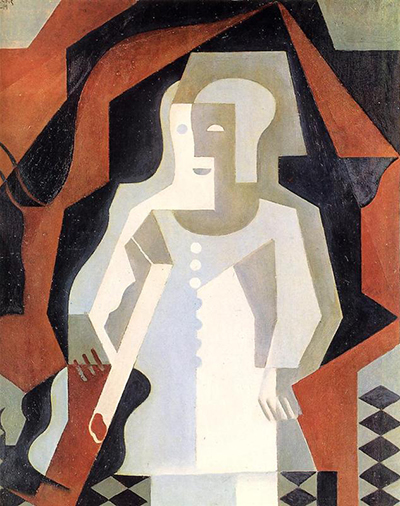Clown was completed by Juan Gris in 1919, shortly after the end of WWI.
The artist takes reality and creates sections of the scene, before re-arranging them a little like a collage. In this case, though, it is entirely in oils and is much more carefully planned. The artist may well have produced several study drawings prior to starting this piece, in order to get the angles and elements of the portrait just right. Changing a cubist painting once you have already started would be particularly complex and best avoided through thorough planning at the earlier stages. The angles and formation of form in this cubist artwork are perhaps a little simpler than some of his other works, meaning the portrait of the clown is easy to distinguish.
It is perhaps the supporting features of this portrait which are more unclear - he is surrounded by bands of colour which provide a bright finish but dont really provide any specific objects other than the buttons of his clothing, the tiled floor and also an item that he holds in his right hand, possible a guitar. The rest of the background is filled with stripes of black, grey and orange, which together provide a good balance of brightness but without becoming garish. Gris himself would tend to use brighter colours than his colleague, Braque, though that would be somewhat of a generalisation of many hundreds of artworks from right across their extensive oevures.
The Cubists would become one of the most influential groups of modern artists, though Pablo Picasso would also be involved in a vast number of other techniques and movements during his long and varied career. In terms of Gris' own output, the most similar paintings to Clown would probably be Harlequin with Guitar plus Pierrot I and Pierrot II. You can also find a close connections with the other members of the art movement who, as discussed, would spend plenty of time in each other's company and try out each other's ideas from time to time, normally adding their own spin onto each one in order to ensure an element of creativity is present.




